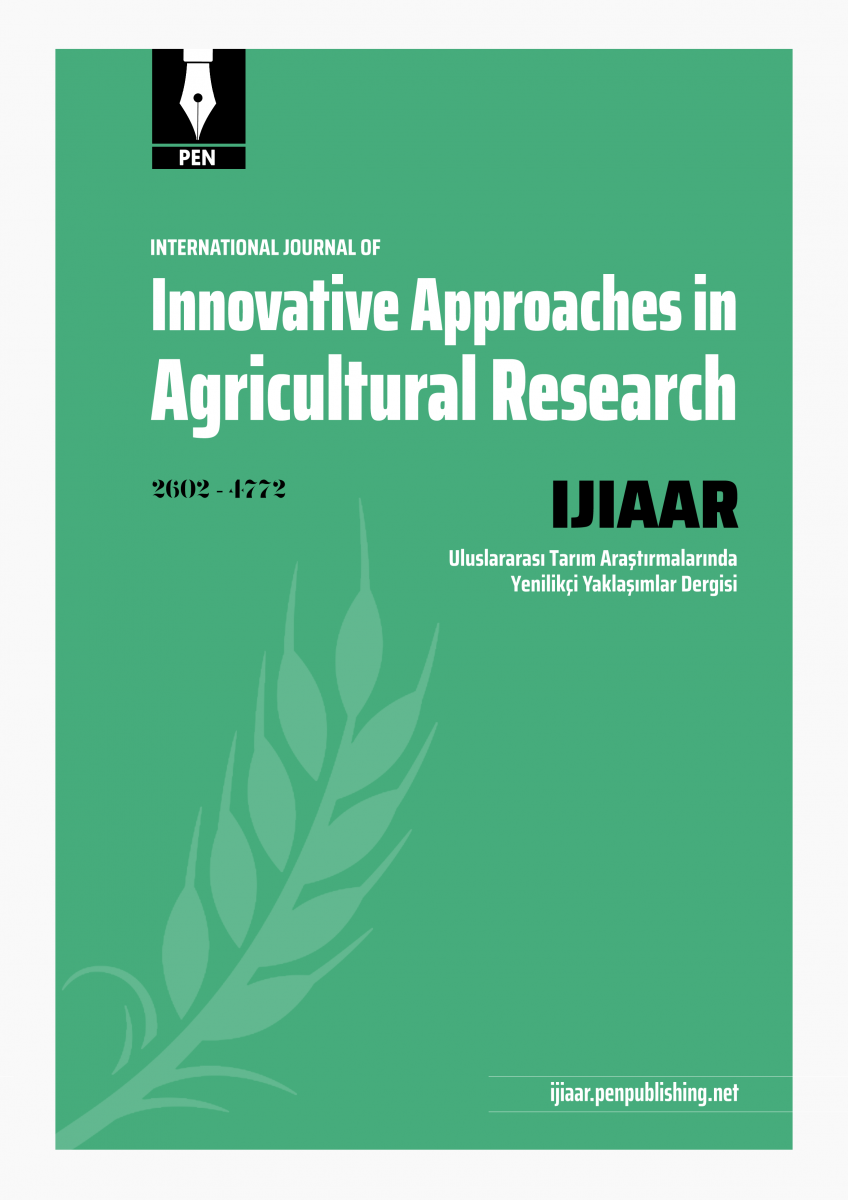Original article | Open Access
International Journal of Innovative Approaches in Agricultural Research 2019, Vol. 3(4) 557-565
Effect of Quinoa Plant on Metastasis and Ion Channels of Rat Brain Cancer Glioma Cell Lines
pp. 557 - 565 | DOI: https://doi.org/10.29329/ijiaar.2019.217.2
Published online: December 10, 2019 | Number of Views: 142 | Number of Download: 645
Abstract
In this study, the effects of the quinoa plant on the rat brain cancer glioma cell line were examined. Rat C6 glioma cell lines were cultivated in Dulbecco's Minimum Essential Medium (DMEM) appendage with HAMS F 12 (1: 1) and 2% FBS. After proliferation, Quinoa plant was added into the cells and incubated at 37°C for 24 and 48 h in 5% CO2. The viability of the cells was identified by using the MTT method (3- (4,5-dimethylthiazol-2-yl) -2,5-diphenyltetrazolium bromide). IC50 concentration was determined using the statistic software SPSS (Probit analysis). The effect of the quinoa plant on the invasiveness of the C6 cells was analyzed by the wound test and the changes in the ion concentrations in the cells were determined with ICP-MS. As a result of the MTT test, the IC50 value of the quinoa plant was determined as 50 ppb. Wound test showed that use of quinoa plant (50 ppb) inhibited metastasis in the glioma cells while the cell proliferation in the control group was continued. Furthermore, calcium, sodium and potassium ions, which are regulators of cell cycle, were found in higher concentrations in that the untreated control cells than quinoa treated cells. As a result of this study; ICP-MS analysis showed that higher levels of calcium, sodium, and potassium ions were found in the untreated cells, whereas the application of the quinoa plant decreased these values. This change in ion channels was thought to be associated with the invasion of glioma cells, and it was determined that quinoa had significant anticancer effects.
Keywords: quinoa, cancer, invasion, glioma, ion channels
| How to Cite this Article |
|---|
|
APA 6th edition Harvard Chicago 16th edition |
| References |
|---|
|

